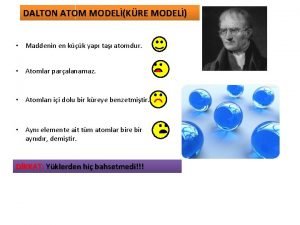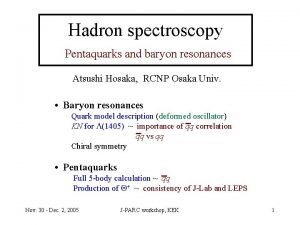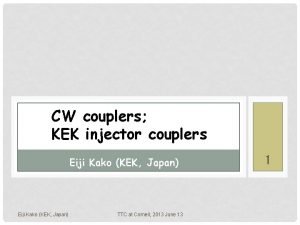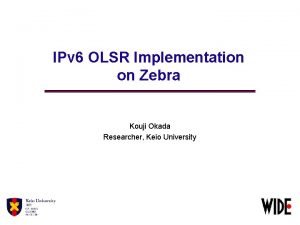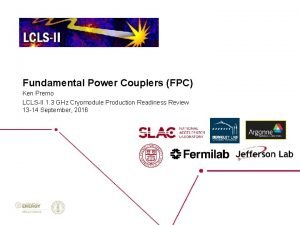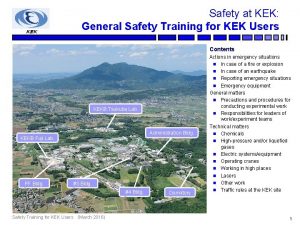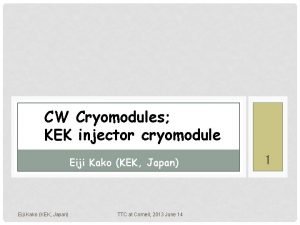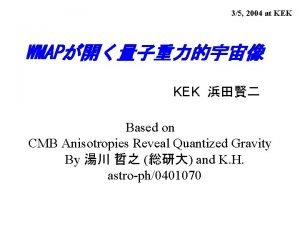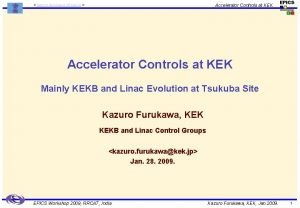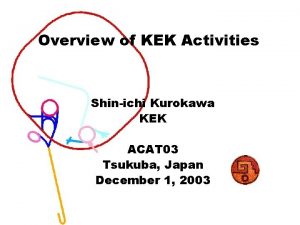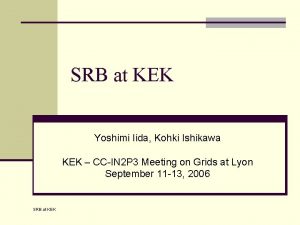Introduction Kek 1 An Analysis of Kek 1









- Slides: 9

Introduction Kek 1 An Analysis of Kek 1 Kekkon Family Kekkon Image Kekkon Background Kekkon Function A Member of the Kekkon Protein Family Kek 1 Research Global LIGs Conclusion Ryan Allis Sean Boyle

Kek 1 Characteristics Introduction Kek 1 Kekkon Family Kekkon Image Kekkon Background Kekkon Function Kek 1 Research Global LIGs Conclusion • Organism: Drosophila melanogaster • Epidermal Growth Factor Receptor (EGFR) Signaling • Neuronal pathfinding • Transmembrane protein • Founding member of kekkon family

Kekkon Family Components Introduction Kek 1 Kekkon Family Kekkon Image Kekkon Background Kekkon Function Kek 1 Research Global LIGs Conclusion • 7 Leucine Rich Regions (LRR) • 1 Immunoglobulin (Ig) – N Glycosylation • C & N Caps • Highly divergent cytoplasmic tails • Regions outside LRR consensus – Share identity – Possible specific protein interactions

Transmembrane Images Introduction Kek 1 Kekkon Family Kekkon Image Kekkon Background Kekkon Function Kek 1 Research Global LIGs Conclusion

Kekkon Family Background Introduction Kek 1 Kekkon Family Kekkon Image Kekkon Background Kekkon Function Kek 1 Research Global LIGs Conclusion • Kekkon family proposed to have expanded from single ancestral gene • Orthologues known in arthropods, but few known in vertebrates – Honey Bee (Apis mellifera) – Mosquito (Anopheles gambiae) – ~300 million years • Ig & LRR are 2 nd most prevalent in Metazoans • Very rarely together – 9 in Drosophila – 6 in Kekkon Family

Kekkon Function Introduction Kek 1 Kekkon Family Kekkon Image Kekkon Background Kekkon Function Kek 1 Research Global LIGs Conclusion • Kek 1 – LRR 2 and transmembrane region required for EGFR inhibition – knockouts exhibit increased spacing between dorsal appendages • Kek 2 & Kek 6 – thought to form complex - CAM (Cell Adhesion Molecules) • kek 1 Kek 6 – Possible overlap of Kek function () • Kek 1, Kek 2, & Kek 3 LRR 3 share motif “L*VE*DLS” – Possible common binding partner

Introduction Kek 1 Kekkon Family Kekkon Image Kekkon Background Kekkon Function Kek 1 Research Global LIGs Conclusion Kek 1 Mutation Research (Drosophila) • 10 Suppressors range from partial to complete LOF – Class I Alleles – Class II Alleles • All are single residue mutations that disrupt the ability to inhibit EGFR • All located in extracellular domain Magnified image crosssection of follicle cells (wt, class 1, class 2)

Similar Genes In Mammalian Organisms Introduction Kek 1 Kekkon Family Kekkon Image Kekkon Background Kekkon Function Kek 1 Research Global LIGs Conclusion • LIGs have been identified in vertebrate genome (mice) • AMIGO • Alivin • LRRs flanked by C-rich regions, a single Ig domain, and transmembrane region.

Conclusions Introduction Kek 1 Kekkon Family Kekkon Image Kekkon Background Kekkon Function Kek 1 Research Global LIGs Conclusion • Kekkon family involved in important health related functions – Development • EGFR • Neuronal Pathfinding • Kekkon family protein structure found in mammalian organisms. • Have yet to be identified in Homo sapiens – Discovery could lead to much greater understanding of human growth factor and neuron development




